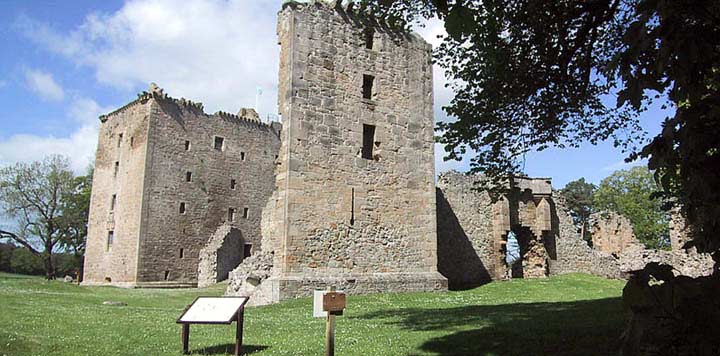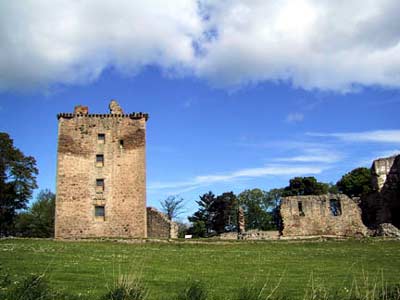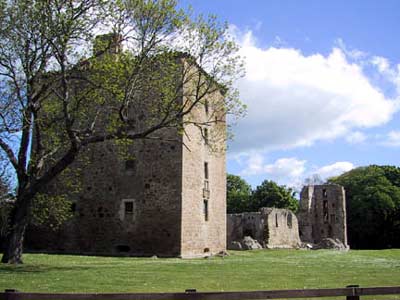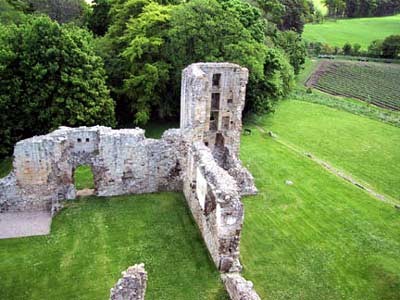
|
|
|
Nothing remains of the 13th century bishop's residence; it was probably built of timber which has left no trace.The earliest surviving walls, on the south and west, date from the 14th century, and suggest that the palace of that period covered much the same area as it does now. The main gate was on the south, and led through a range of buildings into the central courtyard. On the first floor of this range was a chapel, of which three large pointed-arched windows remain in the standing portion of the wall. Two tall traceried windows in the west courtyard wall indicate the existence of a hall in this position. The basement of the later towerhouse, at the south-west corner, incorporates the foundations of a cylindrical tower, which may also have been 14th century and possibly have contained in its upper storeys the private chambers of the bishop. The extent of the palace on the north and east would have been restricted, as in later periods, by the edge of the natural plateau on which it was built. Click here to see a reconstruction of the castle. Click here to see a reconstruction of the castle. |
|
 |
 |
|
During the time of Bishop David Stewart (1461 - 77), construction work began on a massive new rectangular tower to replace the cylindrical one at the south-west corner. This was completed by his successor, Bishop William Tulloch (1477 - 82), and is the largest towerhouse in Scotland. On the first floor it contained the bishop's hall, and above that, three further floors of chambers below a vault and an additional attic storey. Other smaller chambers and closets were built into the thickness of the walls. To the north of the tower, the earlier hall range was demolished and replaced by service buildings. |
|
 |
 |
|
The bishopric of Moray was established in 1107, but little is known of its history until a century later when the Holy Trinity Church at Spynie became the cathedral in which the bishop's throne was located. In 1224, the cathedral was transferred to Elgin, but Spynie remained the principal residence of the bishops until 1686. The office of bishop was abolished in the Scottish Church shortly afterwards. When the first bishop lived here, the palace stood on the edge of a sea-loch giving safe anchorage for fishing boats and merchant ships. There was a thriving settlement in the shadow of the palace. Later, the loch silted up and more recently much of it has been reclaimed for farming. Nothing remains of the medieval town of Spynie except for the palace itself. Mary stayed here from 17th to 19th September 1562 mustering her forces while returning from Inverness to Aberdeen, during the Huntly expedition. Her host was Bishop Patrick Hepburn, relative of the Earl of Bothwell, her future third husband. After the Reformation the palace was used by Protestant bishops. James VI stayed here in 1589. General Munro besieged the castle in 1640, and compelled Bishop Guthrie to surrender it, and the Bishop was imprisoned. The last resident Bishop was Colin Falconer, who died here in 1686, and Bishop Hay, the last bishop, was removed from office in 1688. The building then fell into disrepair. |
|
 |

|
|
Open daily April to September but weekends only October to March. Tel.: 44+ (0)1343 546 358. |
|